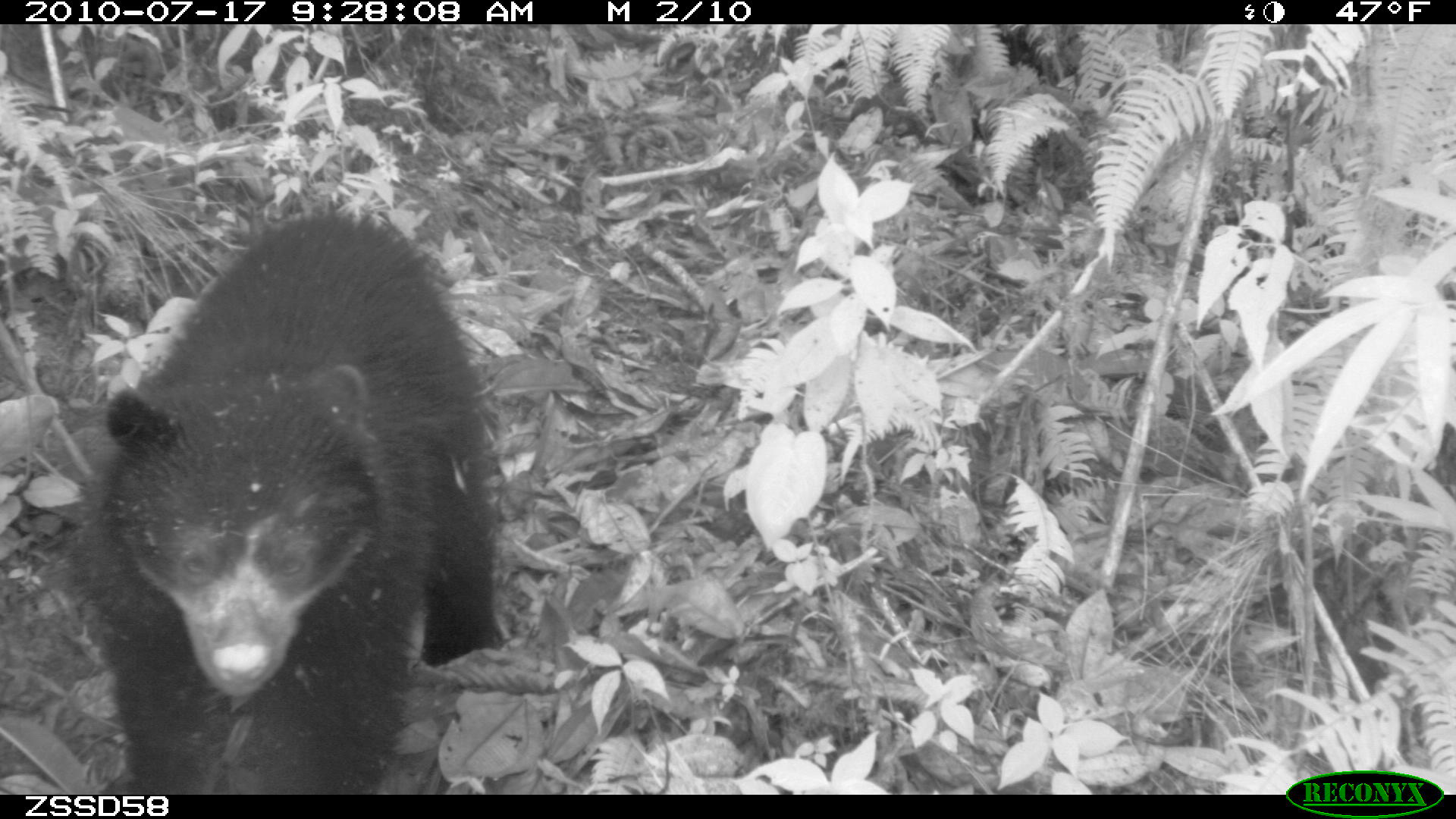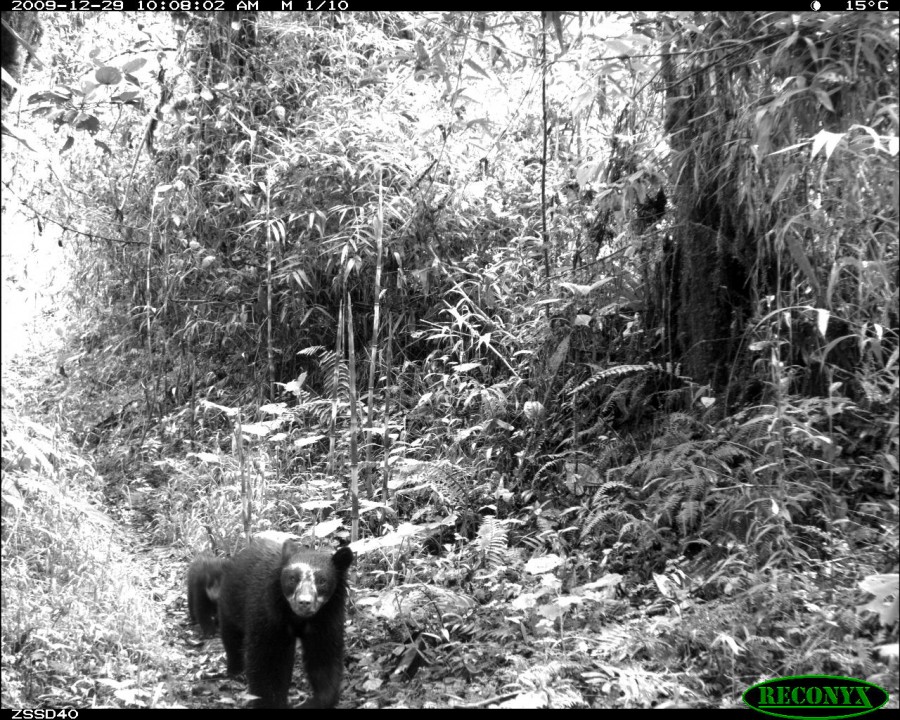Andean Bears on Candid Camera
Andean bears, sometimes called spectacled bears because of the round markings around their eyes, are found in the cloud forests and tropical dry forests of Peru. Like so many species, they have become vulnerable to extinction from loss and fragmentation of their habitats and poaching. The dry forest, in particular, is being converted to agricultural fields at a fast rate and researchers aren’t sure how bears survive there; the more they learn, the more they think these bears are living on the edge of survival.
In 2008, Dr. Russ Van Horn of the San Diego Zoo Institute for Conservation Research began a field conservation program in Peru to study Andean bears, in collaboration with the Botanical Research Institute of Texas, the Spectacled Bear Conservation Society, elements of local governments, and local communities. Among the project’s goals were identification of the critical aspects of the bear’s habitats and what fruiting plants are important to the bears’ survival, plus a study of mating behavior, competitive behavior, and foraging behavior of wild bears.
Through the use of technology—such as camera traps (the photos here were recovered from camera traps set on trees), remote video surveillance, and GPS satellite collars—Russ and his colleagues hoped to answer many of the questions about Andean bears in a long-term effort that includes training of Peruvian biologists. Ultimately, the goal is to compile information that can be used for conservation plans to save this unique bear species and prevent it from disappearing from the forests.

